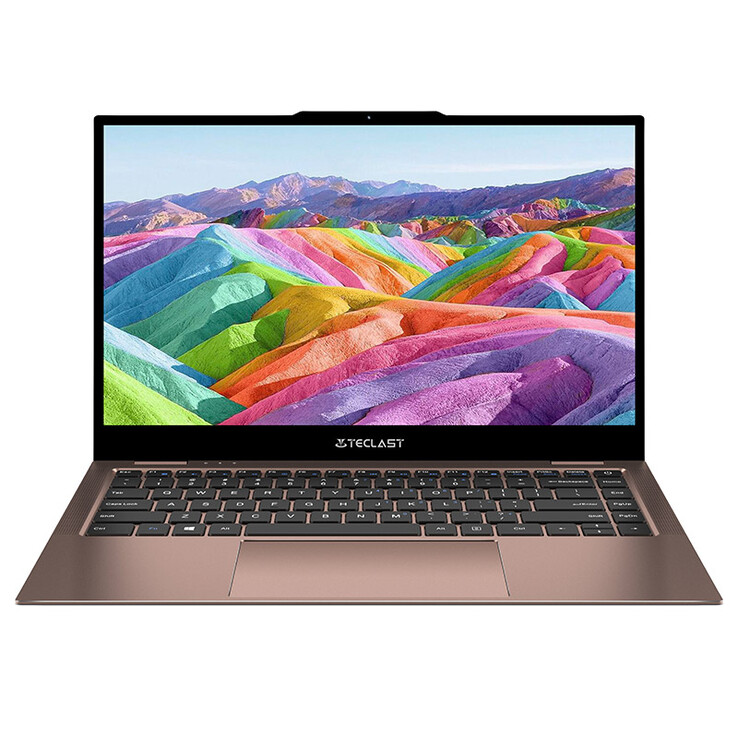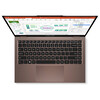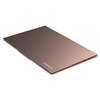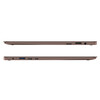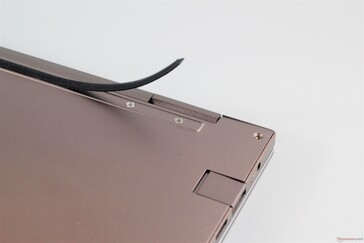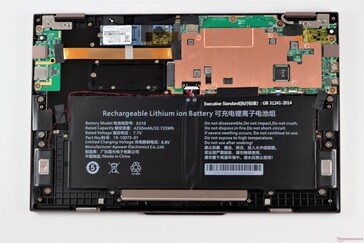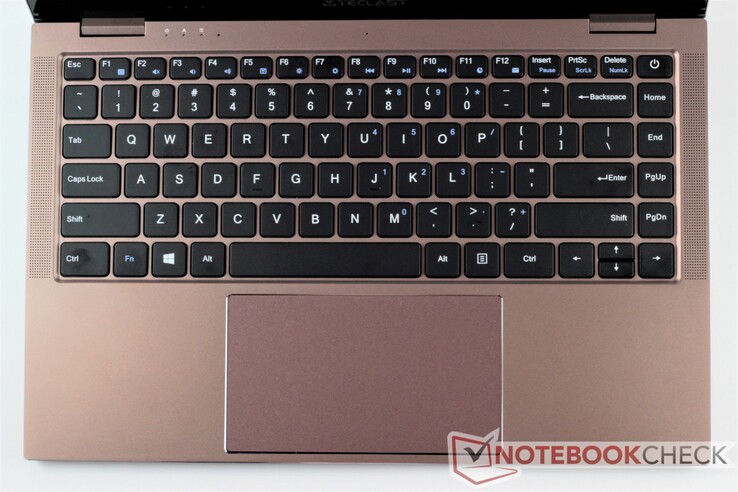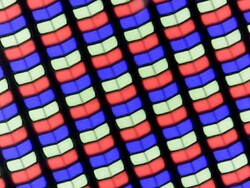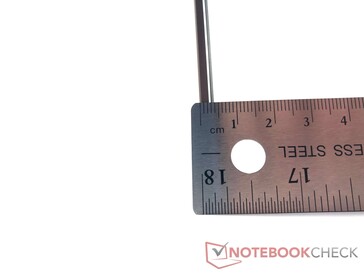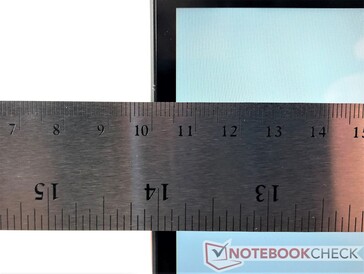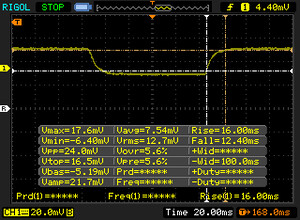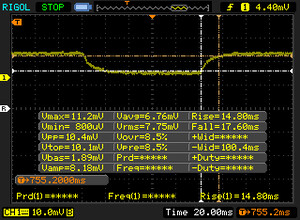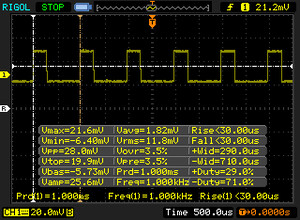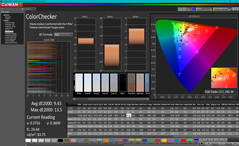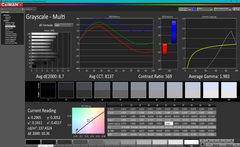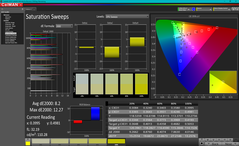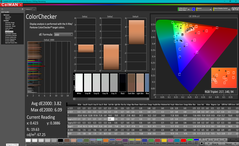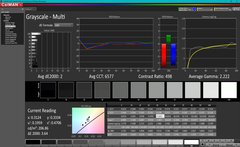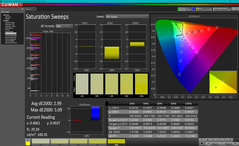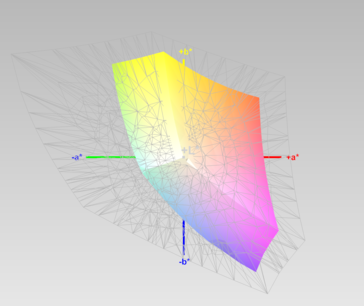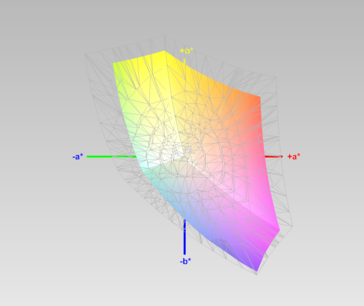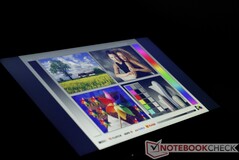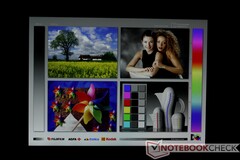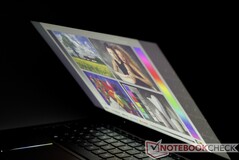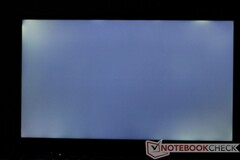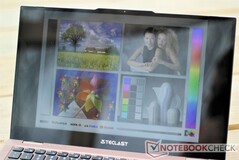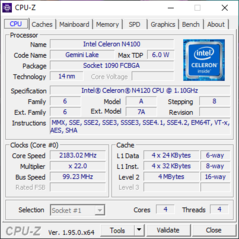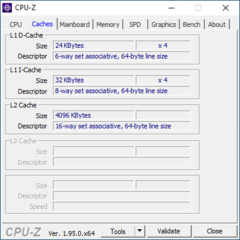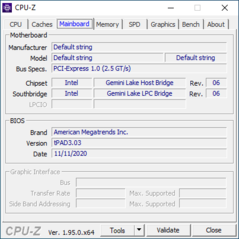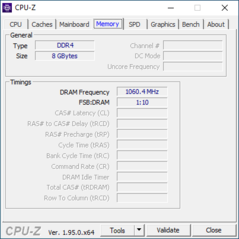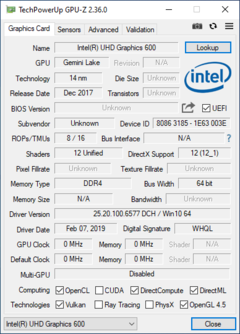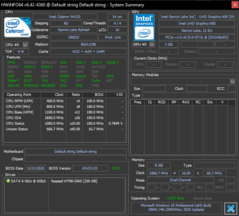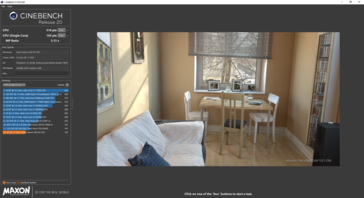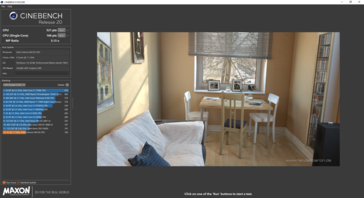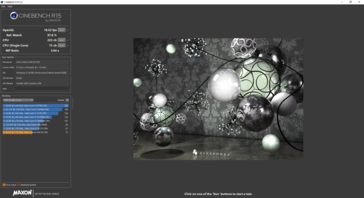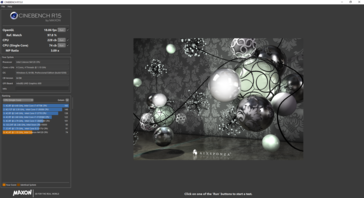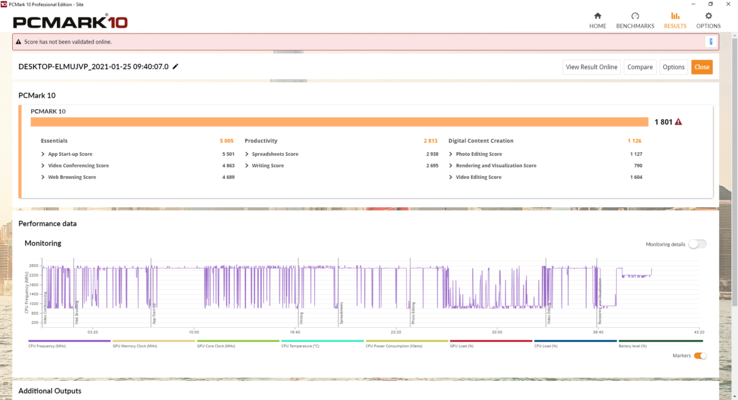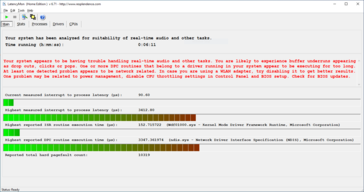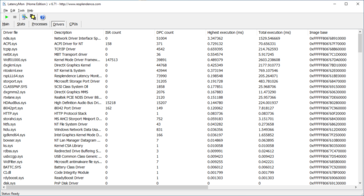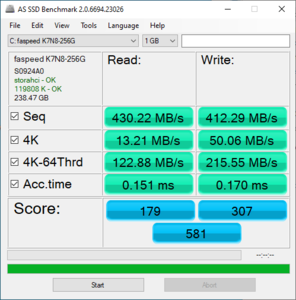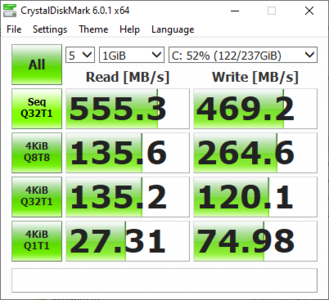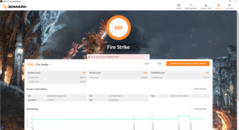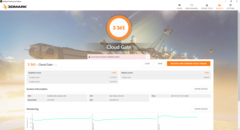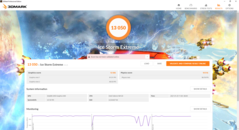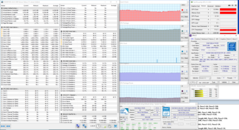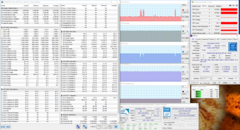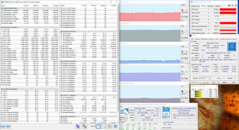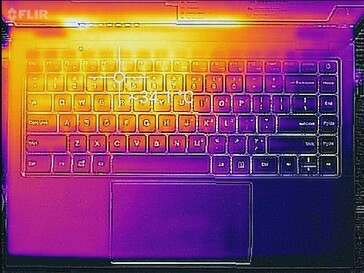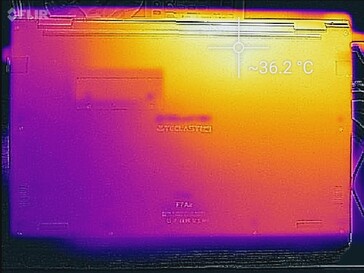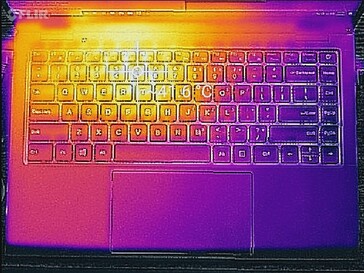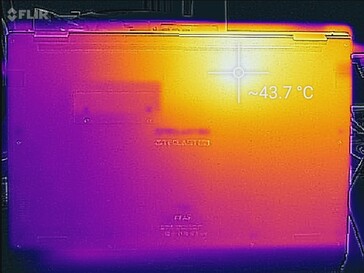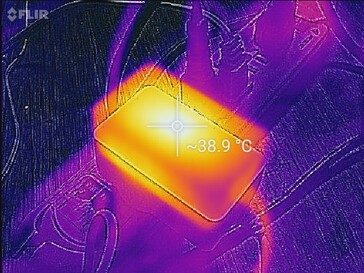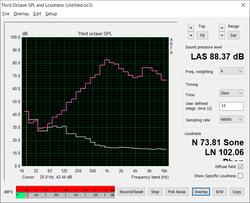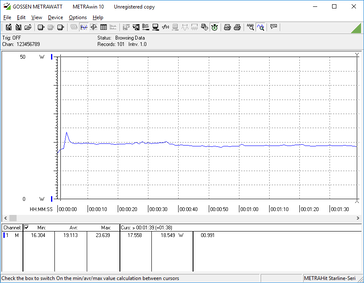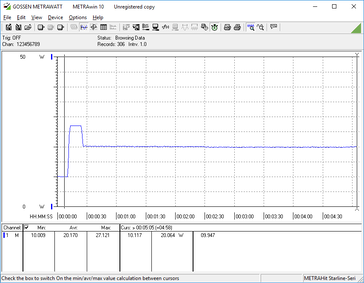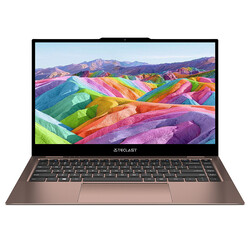Análisis del portátil Teclast F7 Air
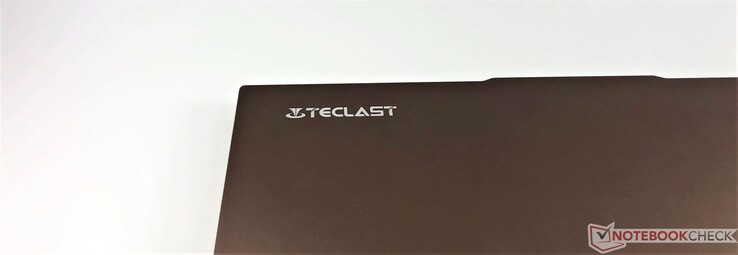
Teclast es uno de los muchos fabricantes chinos con una gran selección de portátiles y tabletas de aspecto agradable y rentable. El F7 Air de 14 pulgadas encaja perfectamente en esa descripción con un perfil delgado, un cuerpo de aluminio bien elaborado y un estilo de primera calidad. Sin embargo, como la mayoría de los portátiles chinos de bajo coste, el F7 Air ofrece poco en cuanto a rendimiento bruto
Si el F7 Air le resulta familiar, es porque tiene un gran parecido con el LarkBook CWI509 de 13,3 pulgadas, ligeramente más pequeño, de Chuwi. La principal diferencia entre ambos es la mayor pantalla de 14 pulgadas del F7 Air. El F7 Air también se inspira en el diseño de las líneas MacBook y MacBook Pro de Apple. Veremos si el F7 Air puede hacer frente a las exigencias informáticas actuales o si su belleza es sólo superficial.
El Teclast F7 Air compite con otros portátiles compactos de baja potencia como el ya mencionado Chuwi LarkBook, el Chuwi AeroBook Pro, el Chuwi LapBook Pro, el Swift 3 y el Aspire 1 de Acer, y el Medion Akoya E4253
potential competitors in comparison
Valoración | Fecha | Modelo | Peso | Altura | Tamaño | Resolución | Precio |
|---|---|---|---|---|---|---|---|
| 75.4 % v7 (old) | 02/2021 | Teclast F7 Air Celeron N4120, UHD Graphics 600 | 1.2 kg | 17 mm | 14.00" | 1920x1080 | |
| 76.9 % v7 (old) | 01/2021 | Chuwi LarkBook CWI509 Celeron N4120, UHD Graphics 600 | 1.1 kg | 12.3 mm | 13.30" | 1920x1080 | |
| 78.7 % v7 (old) | 08/2019 | Chuwi LapBook Pro Celeron N4100, UHD Graphics 600 | 1.4 kg | 13.4 mm | 14.00" | 1920x1080 | |
| 77.7 % v7 (old) | 06/2020 | Chuwi AeroBook Pro m3-8100Y, UHD Graphics 615 | 1.3 kg | 15.2 mm | 13.30" | 1920x1080 | |
| 72.5 % v7 (old) | 06/2019 | Acer Aspire 1 A114-32-P0K1 Pentium N5000, UHD Graphics 605 | 1.7 kg | 17.95 mm | 14.00" | 1920x1080 | |
| 85 % v7 (old) | 06/2020 | Acer Swift 3 SF314-42-R27B R3 4300U, Vega 5 | 1.2 kg | 16.55 mm | 14.00" | 1920x1080 | |
| 79.9 % v7 (old) | 08/2019 | Medion Akoya E4253-30025387 Pentium N5000, UHD Graphics 605 | 1.4 kg | 15 mm | 14.00" | 1920x1080 |
Caja y conectividad
El Teclast F7 Air está muy por encima de su peso en términos de apariencia. El cuerpo de aluminio tiene un aspecto y un tacto fantásticos, y el color dorado le da un bonito toque de color. El acabado cepillado oculta bien las huellas dactilares. El chasis es robusto y sólido. Hay algo de flexión a lo largo de la cubierta del teclado, pero no se nota al escribir. A pesar de su delgado perfil de 5 mm, la tapa es robusta y no se tuerce. Las bisagras son demasiado rígidas para abrirlas con una sola mano, pero mantienen la pantalla en su sitio.
Nuestra principal queja radica en los huecos irregulares alrededor del trackpad y el borde frontal del panel inferior. Sin embargo, estos son detalles menores; la calidad de construcción y la estética son excelentes. A primera vista, el F7 Air se parece más a los portátiles que cuestan 1.000 dólares o más.
La conectividad es adecuada. Los dos USB-A (uno 3.1 Gen 1, el otro 2.0) tienen pequeñas solapas que se pliegan para acomodar el delgado perfil del portátil. Parecen mal hechos, pero han aguantado varios enchufes durante dos semanas. También hay un puerto mini HDMI, por lo que algunos usuarios pueden necesitar un adaptador. El puerto USB-C 3.1 Gen 1 puede usarse para cargar el dispositivo y admite la salida de pantalla por DisplayPort 1.2 (4K a 30 Hz, FHD a 120 Hz)
Top 10 Análisis
» Top 10 Portátiles Multimedia
» Top 10 Portátiles de Juego
» Top 10 Portátiles de Juego ligeros
» Top 10 Portátiles Asequibles de Oficina/Empresa
» Top 10 Portátiles de Juego Ligeros
» Top 10 Portátiles de Oficina/Empresa Premium
» Top 10 Estaciones de Trabajo
» Top 10 Subportátiles
» Top 10 Ultrabooks
» Top 10 Convertibles
» Top 10 Tablets
» Top 10 Tablets Windows
» Top 10 Tablets de menos de 250 Euros
» Top 10 Phablets (>5.5")
» Top 10 Smartphones
» Top 10 Smartphones (≤5")
» Top 10 Smartphones de menos de 300 Euros
» Top 10 Smartphones de menos de 120 Euros
» Top 10 Portátiles de menos de 1000 Euros
» Top 10 Portátiles de menos de 500 Euros
» Top 10 Portátiles de menos de 300 Euros
» Los Mejores Displays de Portátiles Analizados por Notebookcheck
Conectividad
| SD Card Reader | |
| average JPG Copy Test (av. of 3 runs) | |
| Acer Aspire 1 A114-32-P0K1 (Toshiba Exceria Pro SDXC 64 GB UHS-II) | |
| Media de la clase Subnotebook (18.4 - 142, n=14, últimos 2 años) | |
| Chuwi AeroBook Pro (Toshiba Exceria Pro M501 64 GB UHS-II) | |
| Teclast F7 Air (Toshiba Exceria Pro M501 UHS-II) | |
| Chuwi LarkBook CWI509 (Toshiba Exceria Pro M501 32 GB UHS-II) | |
| maximum AS SSD Seq Read Test (1GB) | |
| Acer Aspire 1 A114-32-P0K1 (Toshiba Exceria Pro SDXC 64 GB UHS-II) | |
| Media de la clase Subnotebook (22.5 - 207, n=14, últimos 2 años) | |
| Medion Akoya E4253-30025387 (Toshiba Exceria Pro M501 microSDXC 64GB) | |
| Chuwi AeroBook Pro (Toshiba Exceria Pro M501 64 GB UHS-II) | |
| Teclast F7 Air (Toshiba Exceria Pro M501 UHS-II) | |
| Chuwi LarkBook CWI509 (Toshiba Exceria Pro M501 32 GB UHS-II) | |
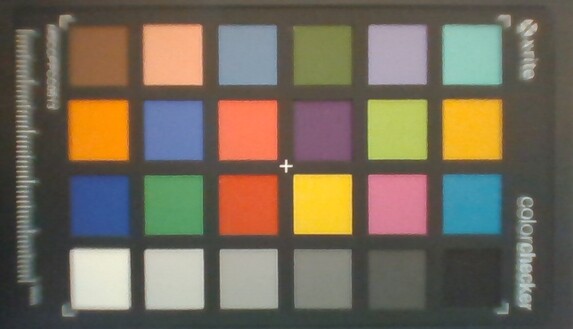
Mantenimiento
Después de quitar 14 tornillos Phillips Heads, el panel inferior se puede desenganchar y retirar. Los usuarios pueden actualizar las dos unidades M.2 2280 SATA solamente; todos los demás componentes están soldados a la placa base. Afortunadamente, hay un práctico panel de acceso para llegar a una de las bahías SATA
Dispositivos de entrada
El teclado es adecuado. Parece y se siente como un teclado de portátil genérico. Las teclas alfanuméricas son pequeñas (~16 mm2). La distancia de desplazamiento es decente, pero el punto de presión es suave. Como resultado, las teclas se sienten esponjosas. El traqueteo se nota pero no es molesto. Por lo demás, no hay nada destacable en el teclado. El teclado no tiene retroiluminación
El clickpad es bastante bueno. Ofrece una gran superficie (12,8 x 7,3 cm) con una superficie elegante que ofrece un deslizamiento suave. El seguimiento es preciso y el mecanismo de clicks no causa ninguna queja. Sin embargo, los gestos se sienten descuidados; el desplazamiento con dos dedos a veces resulta en el acercamiento o alejamiento de una ventana abierta, lo que es frustrante. Como se ha mencionado, hay algunos huecos irregulares a lo largo del borde del trackpad, aunque no afectan a la experiencia
Mostrar
La pantalla es una mezcla. El panel FHD de 14 pulgadas es nítido y tiene un aspecto razonablemente vibrante gracias al acabado brillante, pero la retroiluminación en general es bastante tenue (234 nits). Además, los niveles de negro son relativamente pobres (0,46), lo que se traduce en una baja relación de contraste (512:1). La causa principal de esto es el alto brillo mínimo de la retroiluminación; incluso en su nivel más bajo, la retroiluminación sigue brillando a unos 70 cd/m², que es un poco más brillante que la mayoría de los portátiles. Como tal, el F7 Air no es adecuado para usar en ambientes oscuros; el alto brillo mínimo puede cansar los ojos
Por lo demás, el panel es bueno. Ofrece tiempos de respuesta medios para una pantalla IPS y tiene un PWM decentemente alto (1000 Hz), especialmente comparado con otros portátiles chinos de bajo coste
| |||||||||||||||||||||||||
iluminación: 78 %
Brillo con batería: 235.6 cd/m²
Contraste: 512:1 (Negro: 0.46 cd/m²)
ΔE ColorChecker Calman: 9.43 | ∀{0.5-29.43 Ø4.78}
calibrated: 3.82
ΔE Greyscale Calman: 8.7 | ∀{0.09-98 Ø5}
69% sRGB (Argyll 1.6.3 3D)
44% AdobeRGB 1998 (Argyll 1.6.3 3D)
47.08% AdobeRGB 1998 (Argyll 3D)
68.7% sRGB (Argyll 3D)
45.57% Display P3 (Argyll 3D)
Gamma: 1.983
CCT: 8137 K
| Teclast F7 Air 1920x1080, 14" | Chuwi LarkBook CWI509 M133X56, , 1920x1080, 13.3" | Chuwi LapBook Pro BOE CQ HV140FHNM-N61, , 1920x1080, 14" | Chuwi AeroBook Pro BOE NV133FHM-N6A, , 1920x1080, 13.3" | Acer Aspire 1 A114-32-P0K1 Chi Mei N140HGE-EAA, , 1920x1080, 14" | Acer Swift 3 SF314-42-R27B AU Optronics B140HAN04.0, , 1920x1080, 14" | Medion Akoya E4253-30025387 Chi Mei N140HCA-EAB, , 1920x1080, 14" | |
|---|---|---|---|---|---|---|---|
| Display | 44% | 50% | 39% | -11% | -17% | -10% | |
| Display P3 Coverage (%) | 45.57 | 69.9 53% | 73 60% | 68.7 51% | 40.35 -11% | 37.78 -17% | 40.96 -10% |
| sRGB Coverage (%) | 68.7 | 92.7 35% | 96.1 40% | 88 28% | 60.3 -12% | 56.8 -17% | 61.1 -11% |
| AdobeRGB 1998 Coverage (%) | 47.08 | 67.8 44% | 70.3 49% | 64.4 37% | 41.71 -11% | 39.03 -17% | 42.37 -10% |
| Response Times | -10% | -16% | -5% | 11% | -15% | -15% | |
| Response Time Grey 50% / Grey 80% * (ms) | 32.4 ? | 32 ? 1% | 42 ? -30% | 31 ? 4% | 43 ? -33% | 42 ? -30% | 42 ? -30% |
| Response Time Black / White * (ms) | 28.4 ? | 34.4 ? -21% | 29 ? -2% | 32 ? -13% | 13 ? 54% | 28 ? 1% | 28 ? 1% |
| PWM Frequency (Hz) | 1000 ? | 1000 ? | 200 ? | 201.6 ? | 250 ? | 24500 ? | |
| Screen | 20% | 18% | 21% | -18% | 24% | 10% | |
| Brightness middle (cd/m²) | 235.6 | 235.3 0% | 297 26% | 242.3 3% | 208 -12% | 256 9% | 262 11% |
| Brightness (cd/m²) | 234 | 223 -5% | 268 15% | 233 0% | 192 -18% | 237 1% | 242 3% |
| Brightness Distribution (%) | 78 | 79 1% | 77 -1% | 88 13% | 85 9% | 81 4% | 87 12% |
| Black Level * (cd/m²) | 0.46 | 0.24 48% | 0.625 -36% | 0.31 33% | 0.41 11% | 0.17 63% | 0.505 -10% |
| Contrast (:1) | 512 | 980 91% | 475 -7% | 782 53% | 507 -1% | 1506 194% | 519 1% |
| Colorchecker dE 2000 * | 9.43 | 8.37 11% | 5.23 45% | 6.72 29% | 10.1 -7% | 5.43 42% | 5.49 42% |
| Colorchecker dE 2000 max. * | 13.5 | 15.79 -17% | 9.53 29% | 11.67 14% | 28.85 -114% | 19.73 -46% | 10.63 21% |
| Colorchecker dE 2000 calibrated * | 3.82 | 2.64 31% | 3.95 -3% | 4.38 -15% | 4.8 -26% | ||
| Greyscale dE 2000 * | 8.7 | 9.8 -13% | 6.72 23% | 6 31% | 10.96 -26% | 3.29 62% | 4.84 44% |
| Gamma | 1.983 111% | 2.16 102% | 2.38 92% | 2.18 101% | 2.24 98% | 2.52 87% | 2.3 96% |
| CCT | 8137 80% | 7557 86% | 7015 93% | 7159 91% | 11669 56% | 6840 95% | 6347 102% |
| Color Space (Percent of AdobeRGB 1998) (%) | 44 | 60.1 37% | 63 43% | 57.5 31% | 38 -14% | 36 -18% | 39 -11% |
| Color Space (Percent of sRGB) (%) | 69 | 92.4 34% | 96 39% | 87.7 27% | 59 -14% | 57 -17% | 61 -12% |
| Media total (Programa/Opciones) | 18% /
21% | 17% /
20% | 18% /
21% | -6% /
-13% | -3% /
12% | -5% /
3% |
* ... más pequeño es mejor
Tiempos de respuesta del display
| ↔ Tiempo de respuesta de Negro a Blanco | ||
|---|---|---|
| 28.4 ms ... subida ↗ y bajada ↘ combinada | ↗ 16 ms subida | |
| ↘ 12.4 ms bajada | ||
| La pantalla mostró tiempos de respuesta relativamente lentos en nuestros tests pero podría ser demasiado lenta para los jugones. En comparación, todos los dispositivos de prueba van de ##min### (mínimo) a 240 (máximo) ms. » 74 % de todos los dispositivos son mejores. Eso quiere decir que el tiempo de respuesta es peor que la media (20.2 ms) de todos los dispositivos testados. | ||
| ↔ Tiempo de respuesta 50% Gris a 80% Gris | ||
| 32.4 ms ... subida ↗ y bajada ↘ combinada | ↗ 14.8 ms subida | |
| ↘ 17.6 ms bajada | ||
| La pantalla mostró tiempos de respuesta lentos en nuestros tests y podría ser demasiado lenta para los jugones. En comparación, todos los dispositivos de prueba van de ##min### (mínimo) a 636 (máximo) ms. » 43 % de todos los dispositivos son mejores. Eso quiere decir que el tiempo de respuesta es similar al dispositivo testado medio (31.6 ms). | ||
Parpadeo de Pantalla / PWM (Pulse-Width Modulation)
| Parpadeo de Pantalla / PWM detectado | 1000 Hz | ≤ 99 % de brillo | |
La retroiluminación del display parpadea a 1000 Hz (seguramente usa PWM - Pulse-Width Modulation) a un brillo del 99 % e inferior. Sobre este nivel de brillo no debería darse parpadeo / PWM. La frecuencia de 1000 Hz es bastante alta, por lo que la mayoría de gente sensible al parpadeo no debería ver parpadeo o tener fatiga visual. Comparación: 53 % de todos los dispositivos testados no usaron PWM para atenuar el display. Si se usó, medimos una media de 8111 (mínimo: 5 - máxmo: 343500) Hz. | |||
La F7 Air tiene problemas con la precisión del color. Teniendo en cuenta su relativamente alto DeltaE2000 para los colores y la escala de grises (9,43 y 8,7, respectivamente), la F7 Air no es adecuada para el trabajo en color (se recomienda un DeltaE2000 < 3). La temperatura del color también es muy fría (8137 K) y está muy lejos del ideal de 6500 K. La cobertura del color es escasa, con un 69% y un 44% de los espacios de color sRGB y AdobeRGB, respectivamente
La calibración mejora enormemente la imagen; los deltas medios de los colores y los grises caen a 3,82 y 2, respectivamente. La temperatura de color también se normaliza a 6577 K cuando se calibra. Al sacarlo de la caja, el F7 Air queda por detrás de los portátiles de Chuwi, pero compite bien cuando se calibra
Los ángulos de visión están en línea con las expectativas de un panel IPS. Hay un notable sangrado de la luz de fondo en la esquina superior izquierda que puede verse en escenas oscuras. Los reflejos suponen un problema; debido al acabado brillante del panel y a la débil retroiluminación general, usar el F7 Air a la luz del sol o bajo luces brillantes no es factible
Rendimiento
Procesador
El nombre del juego aquí es la eficiencia más que la potencia. Mientras que el Celeron N4120 puede manejar el trabajo ligero (procesamiento de textos, navegación web ligera), las tareas más pesadas resultan demasiado. Teniendo en cuenta el bajo coste del N4120 y su bajo TDP (6 vatios), es de esperar
Comparado con otros portátiles de su clase, el F7 Air se sitúa en la parte baja del pelotón. El Acer Aspire 1 y el Medion Akoya son ligeramente más rápidos gracias a sus CPUs Pentium Silver N5000. Si nos acercamos al territorio del AMD Ryzen 3 4300U (Acer Swift 3) y a los chips Intel Core i3 de 10ª y 11ª generación (Dell Latitude 3510 y Dell Inspiron 15, respectivamente), vemos más del doble de rendimiento de la CPU en Cinebench.
Cinebench R15: CPU Single 64Bit | CPU Multi 64Bit
Blender: v2.79 BMW27 CPU
7-Zip 18.03: 7z b 4 -mmt1 | 7z b 4
Geekbench 5.5: Single-Core | Multi-Core
HWBOT x265 Benchmark v2.2: 4k Preset
LibreOffice : 20 Documents To PDF
R Benchmark 2.5: Overall mean
| Cinebench R20 / CPU (Single Core) | |
| Media de la clase Subnotebook (128 - 826, n=70, últimos 2 años) | |
| Dell Inspiron 15 5000 5502 | |
| Acer Swift 3 SF314-42-R27B | |
| Dell Latitude 15 3510 NK2MC | |
| Asus Vivobook 15 F512DA-SH31 | |
| Chuwi AeroBook Pro | |
| Medion Akoya E4253-30025387 | |
| Acer Aspire 1 A114-32-P0K1 | |
| Teclast F7 Air | |
| Medio Intel Celeron N4120 (159 - 166, n=3) | |
| Chuwi LapBook Pro | |
| Cinebench R20 / CPU (Multi Core) | |
| Media de la clase Subnotebook (579 - 8541, n=70, últimos 2 años) | |
| Acer Swift 3 SF314-42-R27B | |
| Dell Inspiron 15 5000 5502 | |
| Dell Latitude 15 3510 NK2MC | |
| Asus Vivobook 15 F512DA-SH31 | |
| Chuwi LapBook Pro | |
| Teclast F7 Air | |
| Medion Akoya E4253-30025387 | |
| Medio Intel Celeron N4120 (376 - 516, n=3) | |
| Acer Aspire 1 A114-32-P0K1 | |
| Chuwi AeroBook Pro | |
| Cinebench R15 / CPU Single 64Bit | |
| Media de la clase Subnotebook (72.4 - 322, n=70, últimos 2 años) | |
| Dell Inspiron 15 5000 5502 | |
| Acer Swift 3 SF314-42-R27B | |
| Dell Latitude 15 3510 NK2MC | |
| Asus Vivobook 15 F512DA-SH31 | |
| Chuwi AeroBook Pro | |
| Acer Aspire 1 A114-32-P0K1 | |
| Medion Akoya E4253-30025387 | |
| Medio Intel Celeron N4120 (73 - 74.5, n=3) | |
| Teclast F7 Air | |
| Chuwi LapBook Pro | |
| Cinebench R15 / CPU Multi 64Bit | |
| Media de la clase Subnotebook (327 - 3345, n=70, últimos 2 años) | |
| Acer Swift 3 SF314-42-R27B | |
| Dell Inspiron 15 5000 5502 | |
| Asus Vivobook 15 F512DA-SH31 | |
| Dell Latitude 15 3510 NK2MC | |
| Chuwi LapBook Pro | |
| Medion Akoya E4253-30025387 | |
| Medio Intel Celeron N4120 (223 - 234, n=3) | |
| Teclast F7 Air | |
| Acer Aspire 1 A114-32-P0K1 | |
| Chuwi AeroBook Pro | |
| Blender / v2.79 BMW27 CPU | |
| Medio Intel Celeron N4120 (2558 - 2583, n=2) | |
| Teclast F7 Air | |
| Chuwi AeroBook Pro | |
| Chuwi LapBook Pro | |
| Asus Vivobook 15 F512DA-SH31 | |
| Dell Inspiron 15 5000 5502 | |
| Dell Latitude 15 3510 NK2MC | |
| Acer Swift 3 SF314-42-R27B | |
| Media de la clase Subnotebook (159 - 2271, n=73, últimos 2 años) | |
| 7-Zip 18.03 / 7z b 4 -mmt1 | |
| Media de la clase Subnotebook (2643 - 6442, n=72, últimos 2 años) | |
| Dell Inspiron 15 5000 5502 | |
| Dell Latitude 15 3510 NK2MC | |
| Acer Swift 3 SF314-42-R27B | |
| Asus Vivobook 15 F512DA-SH31 | |
| Chuwi AeroBook Pro | |
| Medio Intel Celeron N4120 (2145 - 2412, n=3) | |
| Chuwi LapBook Pro | |
| Teclast F7 Air | |
| 7-Zip 18.03 / 7z b 4 | |
| Media de la clase Subnotebook (11668 - 77867, n=70, últimos 2 años) | |
| Acer Swift 3 SF314-42-R27B | |
| Dell Inspiron 15 5000 5502 | |
| Dell Latitude 15 3510 NK2MC | |
| Asus Vivobook 15 F512DA-SH31 | |
| Chuwi LapBook Pro | |
| Medio Intel Celeron N4120 (5832 - 7436, n=3) | |
| Teclast F7 Air | |
| Chuwi AeroBook Pro | |
| Geekbench 5.5 / Single-Core | |
| Media de la clase Subnotebook (726 - 2350, n=65, últimos 2 años) | |
| Dell Inspiron 15 5000 5502 | |
| Acer Swift 3 SF314-42-R27B | |
| Dell Latitude 15 3510 NK2MC | |
| Asus Vivobook 15 F512DA-SH31 | |
| Chuwi AeroBook Pro | |
| Medio Intel Celeron N4120 (438 - 449, n=3) | |
| Teclast F7 Air | |
| Geekbench 5.5 / Multi-Core | |
| Media de la clase Subnotebook (2557 - 17218, n=65, últimos 2 años) | |
| Acer Swift 3 SF314-42-R27B | |
| Dell Inspiron 15 5000 5502 | |
| Dell Latitude 15 3510 NK2MC | |
| Asus Vivobook 15 F512DA-SH31 | |
| Medio Intel Celeron N4120 (1505 - 1561, n=3) | |
| Teclast F7 Air | |
| Chuwi AeroBook Pro | |
| HWBOT x265 Benchmark v2.2 / 4k Preset | |
| Media de la clase Subnotebook (0.97 - 25.1, n=70, últimos 2 años) | |
| Acer Swift 3 SF314-42-R27B | |
| Dell Inspiron 15 5000 5502 | |
| Dell Latitude 15 3510 NK2MC | |
| Asus Vivobook 15 F512DA-SH31 | |
| Chuwi LapBook Pro | |
| Chuwi AeroBook Pro | |
| Teclast F7 Air | |
| Medio Intel Celeron N4120 (1.02 - 1.38, n=3) | |
| LibreOffice / 20 Documents To PDF | |
| Medio Intel Celeron N4120 (131 - 157, n=3) | |
| Teclast F7 Air | |
| Chuwi AeroBook Pro | |
| Asus Vivobook 15 F512DA-SH31 | |
| Dell Inspiron 15 5000 5502 | |
| Acer Swift 3 SF314-42-R27B | |
| Media de la clase Subnotebook (38.5 - 220, n=69, últimos 2 años) | |
| Dell Latitude 15 3510 NK2MC | |
| R Benchmark 2.5 / Overall mean | |
| Teclast F7 Air | |
| Medio Intel Celeron N4120 (1.642 - 1.649, n=3) | |
| Chuwi AeroBook Pro | |
| Asus Vivobook 15 F512DA-SH31 | |
| Dell Latitude 15 3510 NK2MC | |
| Acer Swift 3 SF314-42-R27B | |
| Dell Inspiron 15 5000 5502 | |
| Media de la clase Subnotebook (0.403 - 1.456, n=71, últimos 2 años) | |
* ... más pequeño es mejor
Rendimiento del sistema
El rendimiento general del sistema es adecuado para el trabajo de oficina en general, las redes sociales y algunas transmisiones multimedia. El Teclast F7 Air está en línea con otros portátiles chinos de bajo coste, así como con máquinas económicas como el Acer Aspire 1. Sin embargo, el F7 Air palidece en comparación incluso con el chip Ryzen de gama baja, como el que se encuentra en el Acer Swift 3. Aun así, el F7 Air debería ser lo suficientemente bueno para la mayoría de la gente
| PCMark 10 Score | 1801 puntos | |
ayuda | ||
Latencia del CPD
| DPC Latencies / LatencyMon - interrupt to process latency (max), Web, Youtube, Prime95 | |
| Teclast F7 Air | |
* ... más pequeño es mejor
Dispositivos de almacenamiento
| Teclast F7 Air faspeed K7N8-256G | Chuwi LarkBook CWI509 Kingston RBUSNS8180DS3256GJ | Chuwi AeroBook Pro Netac SSD 256GB | Acer Aspire 1 A114-32-P0K1 64 GB eMMC Flash | Acer Swift 3 SF314-42-R27B SK hynix BC511 HFM256GDJTNI-82A0 | |
|---|---|---|---|---|---|
| CrystalDiskMark 5.2 / 6 | 4% | 44% | -70% | 159% | |
| Write 4K (MB/s) | 75 | 63.9 -15% | 113.1 51% | 24.08 -68% | 96.3 28% |
| Read 4K (MB/s) | 27.31 | 34.38 26% | 30.21 11% | 11.48 -58% | 35.06 28% |
| Write Seq (MB/s) | 373.9 | 439.8 | 149.7 | 1001 | |
| Read Seq (MB/s) | 411.7 | 536 | 271.2 | 1072 | |
| Write 4K Q32T1 (MB/s) | 120.1 | 124.1 3% | 279.1 132% | 23.87 -80% | 423.9 253% |
| Read 4K Q32T1 (MB/s) | 135.2 | 139.5 3% | 227.3 68% | 30.76 -77% | 464.7 244% |
| Write Seq Q32T1 (MB/s) | 469.2 | 500 7% | 469.7 0% | 137.2 -71% | 967 106% |
| Read Seq Q32T1 (MB/s) | 555 | 537 -3% | 555 0% | 205.1 -63% | 2179 293% |
| Write 4K Q8T8 (MB/s) | 264.6 | ||||
| Read 4K Q8T8 (MB/s) | 135.6 | ||||
| AS SSD | 109% | 26% | 180% | ||
| Seq Read (MB/s) | 430.2 | 425.6 -1% | 445.4 4% | 1682 291% | |
| Seq Write (MB/s) | 412.3 | 417.1 1% | 418.9 2% | 931 126% | |
| 4K Read (MB/s) | 13.21 | 28.45 115% | 22.81 73% | 41.53 214% | |
| 4K Write (MB/s) | 50.1 | 48.14 -4% | 83.3 66% | 109.1 118% | |
| 4K-64 Read (MB/s) | 122.9 | 928 655% | 180.6 47% | 603 391% | |
| 4K-64 Write (MB/s) | 215.6 | 328.5 52% | 281.5 31% | 713 231% | |
| Access Time Read * (ms) | 0.151 | 0.175 -16% | 0.113 25% | ||
| Access Time Write * (ms) | 0.17 | 0.189 -11% | 0.161 5% | 0.035 79% | |
| Score Read (Points) | 179 | 999 458% | 248 39% | 813 354% | |
| Score Write (Points) | 307 | 418 36% | 408 33% | 915 198% | |
| Score Total (Points) | 581 | 1931 232% | 789 36% | 2118 265% | |
| Copy ISO MB/s (MB/s) | 440.8 | 473.6 7% | 410.8 -7% | 692 57% | |
| Copy Program MB/s (MB/s) | 193.4 | 198.6 3% | 204.4 6% | 226.5 17% | |
| Copy Game MB/s (MB/s) | 396.8 | 415.3 5% | 435.5 10% | 391.5 -1% | |
| Media total (Programa/Opciones) | 57% /
78% | 35% /
32% | -70% /
-70% | 170% /
173% |
* ... más pequeño es mejor
Rendimiento de la GPU
La iGPU Intel UHD Graphics 600 admite códecs de vídeo modernos (H.265/HEVC, VP9) para la reproducción de medios. La GPU también soporta hasta 4K 60 Hz a través del puerto mini HDMI 2.0a y hasta dos pantallas FHD externas a través de los puertos mini HDMI y USB-C.
Es posible el streaming 4K, pero el portátil pierde ocasionalmente fotogramas. El resultado es un poco nervioso. Si el streaming de vídeo se almacena adecuadamente en la caché, la reproducción es bastante fluida
El Teclast F7 Air encaja perfectamente entre otros portátiles económicos con GPUs poco potentes. La Intel UHD Graphics 620, que se suele ver en los portátiles Intel, es aproximadamente el doble de potente que la UHD Graphics 600 en 3DMark. Las iGPUs más potentes como la Vega 5 de AMD o la nueva Iris Xe Graphics de Intel son aproximadamente 5-6 veces más potentes
| 3DMark Cloud Gate Standard Score | 3361 puntos | |
| 3DMark Fire Strike Score | 434 puntos | |
| 3DMark Time Spy Score | 133 puntos | |
ayuda | ||
Rendimiento de los juegos
El Teclast F7 Air sólo puede manejar títulos ligeros e Indie. Los juegos con gráficos 2D simples como Stardew Valley y Papers, Please se ejecutan sin mucho problema. Sin embargo, los títulos modernos en 3D no son jugables. Incluso los juegos más antiguos como Bioshock Infinite luchan por alcanzar los 30 fps en la configuración más baja
| bajo | medio | alto | ultra | |
|---|---|---|---|---|
| BioShock Infinite (2013) | 28 | |||
| Dota 2 Reborn (2015) | 38.5 | 17.2 | 8.2 | 7.4 |
| Final Fantasy XV Benchmark (2018) | 4.8 | |||
| X-Plane 11.11 (2018) | 8.57 | 5.64 | 4.91 |
Emissions & Power
Ruido del sistema
El Teclast F7 Air no tiene ventilador, por lo que es completamente silencioso. No hay ningún ruido de bobina
Temperatura
A pesar de no tener ventilador, el F7 Air se mantiene relativamente fresco. Bajo carga sintética completa, la mayor parte del panel inferior se mantiene por debajo de los 40º C. Hay un punto caliente directamente sobre el SoC y el escudo térmico de cobre que alcanza los 43.8º C. Por lo demás, el calor externo no es un problema
Esto se debe principalmente a la eficiente CPU. Bajo estrés sintético, notamos cierta ralentización: después de ejecutar Priime95 durante unos minutos, la CPU retrocede a 1,7-1,8 GHz para mantener las temperaturas bajo control. Durante una hora de ejecución de Prime95, el sistema mantiene la temperatura de la CPU entre 73-78° C
Al forzar la GPU con FurMark, el SoC se estabiliza en torno a los 70º C, mientras que la GPU consigue aumentar su velocidad hasta los 700 MHz con caídas ocasionales hasta los 350 MHz. Estresar tanto la CPU como la GPU hace que el procesador se ralentice aún más hasta los 1,5 GHz. La GPU sufre especialmente durante esta prueba, con una media de apenas 150-165 MHz. Sin embargo, esta carga no es indicativa del uso en el mundo real
(±) La temperatura máxima en la parte superior es de 41.2 °C / 106 F, frente a la media de 35.9 °C / 97 F, que oscila entre 21.4 y 59 °C para la clase Subnotebook.
(±) El fondo se calienta hasta un máximo de 43.8 °C / 111 F, frente a la media de 39.3 °C / 103 F
(+) En reposo, la temperatura media de la parte superior es de 29.7 °C / 85# F, frente a la media del dispositivo de 30.8 °C / 87 F.
(+) El reposamanos y el panel táctil están a una temperatura inferior a la de la piel, con un máximo de 30.6 °C / 87.1 F y, por tanto, son fríos al tacto.
(-) La temperatura media de la zona del reposamanos de dispositivos similares fue de 28.2 °C / 82.8 F (-2.4 °C / -4.3 F).
Altavoces
Los altavoces tienen un volumen relativamente alto, sobre todo teniendo en cuenta el tamaño y el precio de la máquina. Sin embargo, la música y los medios se distorsionan mucho a más del 80% de volumen, con chasquidos y crujidos desagradables. Por debajo del 80% de volumen, los altavoces son decentes. Los graves están casi totalmente ausentes, pero los medios y los agudos son altos y claros. En general, los altavoces están bien para el consumo de medios, pero se recomiendan los auriculares para obtener claridad y un perfil de sonido más completo
Teclast F7 Air análisis de audio
(+) | los altavoces pueden reproducir a un volumen relativamente alto (#88.4 dB)
Graves 100 - 315 Hz
(-) | casi sin bajos - de media 20.6% inferior a la mediana
(+) | el bajo es lineal (6.6% delta a la frecuencia anterior)
Medios 400 - 2000 Hz
(±) | medias más altas - de media 6.3% más altas que la mediana
(+) | los medios son lineales (6.4% delta a la frecuencia anterior)
Altos 2 - 16 kHz
(+) | máximos equilibrados - a sólo 2.8% de la mediana
(+) | los máximos son lineales (4.4% delta a la frecuencia anterior)
Total 100 - 16.000 Hz
(±) | la linealidad del sonido global es media (15.5% de diferencia con la mediana)
En comparación con la misma clase
» 35% de todos los dispositivos probados de esta clase eran mejores, 5% similares, 60% peores
» El mejor tuvo un delta de 5%, la media fue 18%, el peor fue ###max##%
En comparación con todos los dispositivos probados
» 22% de todos los dispositivos probados eran mejores, 4% similares, 74% peores
» El mejor tuvo un delta de 4%, la media fue 24%, el peor fue ###max##%
Chuwi AeroBook Pro análisis de audio
(+) | los altavoces pueden reproducir a un volumen relativamente alto (#82.8 dB)
Graves 100 - 315 Hz
(-) | casi sin bajos - de media 24.7% inferior a la mediana
(+) | el bajo es lineal (4.8% delta a la frecuencia anterior)
Medios 400 - 2000 Hz
(±) | medios reducidos - de media 7.2% inferior a la mediana
(±) | la linealidad de los medios es media (10.8% delta respecto a la frecuencia anterior)
Altos 2 - 16 kHz
(±) | máximos más altos - de media 9.4% más altos que la mediana
(±) | la linealidad de los máximos es media (12% delta a frecuencia anterior)
Total 100 - 16.000 Hz
(-) | el sonido global no es lineal (37.3% de diferencia con la mediana)
En comparación con la misma clase
» 97% de todos los dispositivos probados de esta clase eran mejores, 2% similares, 1% peores
» El mejor tuvo un delta de 5%, la media fue 18%, el peor fue ###max##%
En comparación con todos los dispositivos probados
» 94% de todos los dispositivos probados eran mejores, 1% similares, 5% peores
» El mejor tuvo un delta de 4%, la media fue 24%, el peor fue ###max##%
Consumo de energía
Dado que el F7 Air utiliza componentes de baja potencia (por ejemplo, el TDP de la CPU es de 6 vatios), el consumo general de energía es muy bajo. Bajo carga sintética completa, el sistema sólo consume 20 vatios. El adaptador de corriente tiene una potencia nominal de 24 vatios, que puede suministrar fácilmente suficiente energía para cualquier carga de trabajo
| Off / Standby | |
| Ocioso | |
| Carga |
|
Clave:
min: | |
Duración de la batería
A pesar de su bajo consumo, el F7 Air consigue durar algo más de cuatro horas en nuestro test de batería WiFi v1.3 (pantalla ajustada a 150 nits, perfil de energía equilibrado, abriendo una nueva página web cada 30-40 segundos). Esto se debe principalmente a la pequeña batería de 32,7 Wh. Como el dispositivo es tan delgado, el tamaño de la batería debe ser limitado. La duración de la batería se ve afectada por ello. Sin embargo, el F7 Air puede cargarse a través del puerto USB-C, lo que es un buen plus
Pro
Contra
Veredicto
El Teclast F7 Air es un excelente ejemplo de que la forma prima sobre la función. El portátil está bien diseñado y tiene un aspecto impresionante, especialmente teniendo en cuenta su precio (399,99 dólares). La mayoría de los portátiles de este precio parecen trozos de plástico baratos, pero el F7 Air se parece más al MacBook de 12 pulgadas
Sin embargo, su belleza es sólo superficial. El potente Intel Celeron N4120 es demasiado débil y lento para cualquier cosa que no sea el trabajo de oficina, el correo electrónico y la navegación web. La máquina puede manejar algo de streaming de medios, incluyendo vídeo 4K, pero esto requiere paciencia y está lejos de ser perfecto.
Si a esto le añadimos la escasa duración de la batería, un teclado poco convincente y una pantalla mediocre (antes de la calibración), las deficiencias se hacen evidentes. Hay algunas cosas buenas aquí, principalmente la estética y la calidad de construcción. Sin embargo, hay demasiados defectos para que podamos recomendar el portátil
En definitiva, el Teclast F7 Air sufre el mismo destino que otros portátiles económicos de baja potencia. No es lo suficientemente potente para todas las tareas, excepto las más sencillas. Si quieres un portátil bonito y no te importa ni necesitas un hardware potente, el Teclast F7 Air puede ser un buen valor para ti. Sin embargo, una máquina sencilla y de precio similar con una CPU Intel Core i3 o AMD Ryzen 3 dejará al F7 Air fuera del agua
Precio y disponibilidad
El Teclast F7 Air se vende por 399,99 dólares. Está disponible en tiendas selectas como Gearbest y AliExpress
Teclast F7 Air
- 02/07/2021 v7 (old)
Sam Medley




